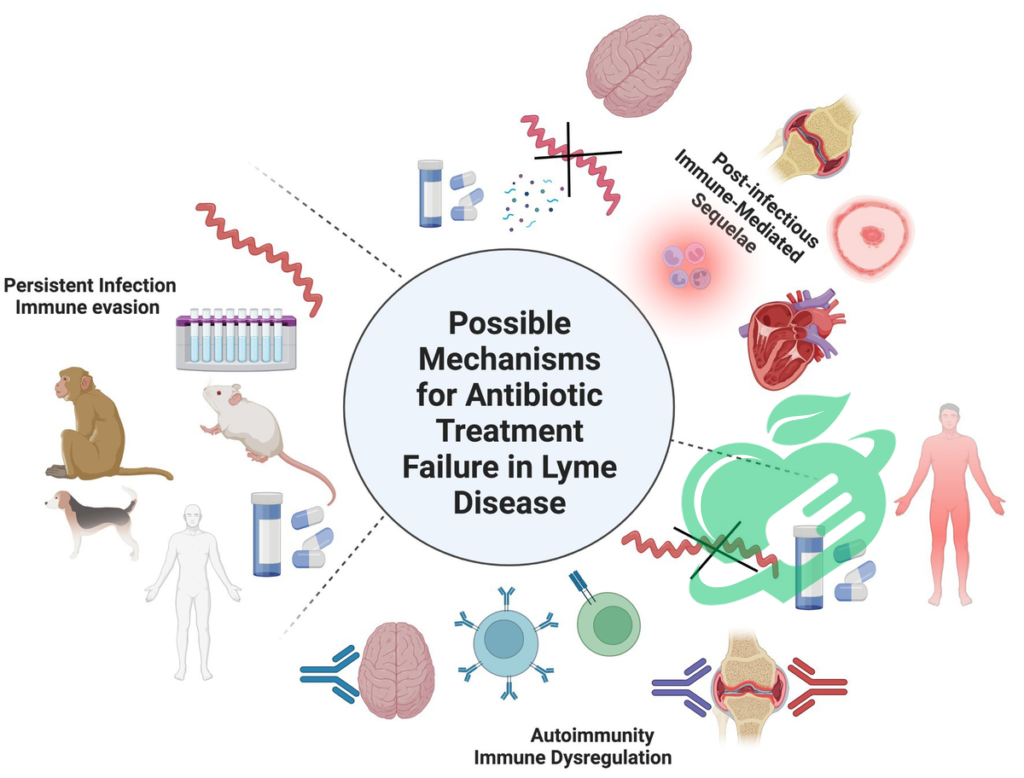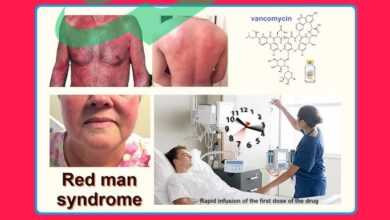Combatting Cloves Disease: Expert Insights and Advice

Definition of Cloves Disease
Cloves Disease, also known as Congenital Lipomatous Overgrowth, Vascular malformations, Epidermal nevi, and Skeletal anomalies, is a rare genetic condition characterized by a range of symptoms that can vary significantly from person to person. Primarily, it leads to overgrowth of fat tissue, vascular abnormalities, and skin lesions, which can affect an individual’s physical appearance and overall health. These symptoms can manifest in various areas of the body for individuals diagnosed with Cloves Disease, potentially impacting day-to-day life and self-esteem. Understanding this condition requires a deeper dive into its causes and associated symptoms.
Causes of Clove Disease
The underlying cause of Cloves Disease is linked to genetic mutations. While the exact mechanism is not fully understood, these mutations are believed to affect how cells grow and replicate. The disease is often sporadic, meaning it can occur without a family history. However, there are cases where it can appear due to inherited genetic factors. Key causes include:
- Genetic mutations that disrupt normal growth patterns.
- Abnormalities in gene expression that lead to overgrowth.
Research is ongoing to uncover more about the genetic factors that contribute to Cloves Disease, but those affected typically become crucial advocates in raising awareness and sharing their journeys.
Symptoms and effects of clove disease
Symptoms of Cloves Disease can vary widely, making it a complex condition to diagnose. Some common symptoms include:
- Lipomas: Benign tumors made of fatty tissue, often located in subcutaneous layers.
- Vascular Malformations: Unusual blood vessel formations that can manifest as swelling or discoloration.
- Epidermal Nevi: Skin lesions that can range from flat birthmarks to elevated papules.
Other potential effects on individuals might include:
- Physical Limitations: Depending on where the overgrowths occur, some individuals may experience challenges with mobility or function.
- Psychological Impact: The visible symptoms can lead to challenges in self-esteem and social interactions.
For those navigating life with Cloves Disease, support from medical professionals and community networks plays a vital role in managing both the physical and emotional aspects of the condition.
Read also: Innovative Therapies for Treating Coronary Artery Disease (CAD)

Methods for Diagnosing Cloves Disease
Diagnosing clove disease can be a complex process due to the variability of its symptoms. Healthcare professionals often rely on a combination of clinical evaluations and advanced imaging techniques.
- Physical Examination: The first step usually involves a thorough physical examination to assess the presence of common symptoms such as lipomas and vascular malformations.
- Ultrasound: This imaging technique can effectively visualize soft tissue masses and assess their characteristics.
- MRI or CT Scans: For a more in-depth analysis, imaging through magnetic resonance imaging (MRI) or computed tomography (CT) scans can provide detailed views of both soft tissues and any skeletal abnormalities.
- Genetic Testing: As genetic factors play a critical role in ClClove disease testing can confirm diagnoses by identifying specific mutations associated with the condition.
A personal account from a parent navigating the diagnosis of Cloclove disease highlights the importance of comprehensive assessments to ensure no symptoms are overlooked.
Read also: The Ultimate Guide to Brewing the Perfect Cup of Clove Tea
The importance of early detection of clove disease
Early detection of Clclove disease is crucial for several reasons. Identifying the condition early on enables timely intervention, which can help manage symptoms that otherwise might lead to complications later in life.
- Better Outcomes: Patients diagnosed early tend to have better management of their symptoms.
- Informed Planning: Early awareness allows families to prepare for potential challenges, whether they be physical, emotional, or social.
For instance, a child diagnosed with the condition in infancy may require surgical interventions as they grow, while those diagnosed later might navigate different obstacles, making early diagnosis a pivotal factor in their journey.
Read also: Is POTS Disease Hereditary? Find Out the Truth!
Screening Techniques
Screening for Cloves Disease is not widely established due to its rarity; however, there are guidelines that caregivers and healthcare professionals can follow.
- Routine Check-ups: Regular visits to healthcare providers can help identify early signs of Clclove disease promptly.
- Genetic Counseling: Families with a history of genetic conditions may benefit from genetic counseling, allowing them access to comprehensive information regarding their risks and screening options.
- Community Awareness: Raising awareness and sharing knowledge in support groups can ensure that symptoms are recognized sooner rather than later, facilitating early intervention.
In summary, a proactive approach to diagnosis and screening not only aids in early detection but also supports affected individuals and their families in navigating the complexities of Cloves Disease with better resources and understanding.
Read also: Discover the Authentic Flavors of Clove Indian Cuisine

Treatment Options
Medications and treatments for clove disease
When it is Cloveto treating clove disease, the approach is often multifaceted, primarily focusing on managing symptoms rather than curing the disease. Medications can play a pivotal role in this management.
- Pain Management: Non-steroidal anti-inflammatory drugs (NSAIDs) are commonly prescribed to help manage pain associated with lipomas or other growths.
- Topical Treatments: For skin lesions like epidermal nevi, topical treatments may be recommended to address cosmetic concerns or irritation.
- Physical Therapy: In cases where fat overgrowth affects mobility, physical therapy can improve strength and flexibility, aiding overall quality of life.
Among the many stories shared by patients, one individual recounted how regular physical therapy not only alleviated discomfort but also fostered a connection with supportive peers who understood the challenges of Cloves Disease.
Lifestyle Changes for Managing Cloves Disease
In addition to medical interventions, lifestyle changes can significantly enhance the management of Cloves Disease. Here are some effective strategies:
- Dietary Adjustments: Maintaining a balanced diet rich in nutrients can support overall health. Some individuals find that incorporating anti-inflammatory foods, like leafy greens and omega-3 fatty acids, can also aid in managing symptoms.
- Regular Exercise: Engaging in low-impact activities like swimming or yoga can improve both physical health and emotional well-being.
- Stress Management: Mindfulness practices, meditation, and relaxation techniques can mitigate stress, which may exacerbate symptoms.
An inspiring example comes from a support group participant who shared how adopting a routine of gentle yoga sessions not only improved physical movement but also provided a mindful space for self-acceptance and community connection.
Surgical Interventions
For some individuals with Cloves Disease, surgical interventions may be necessary, particularly when associated growths become problematic or painful.
- Liposuction: In cases where lipomas cause discomfort, liposuction can effectively remove excess fat tissue.
- Excision of Lesions: Surgical removal of problematic lesions might be indicated, especially if they lead to infections or aren’t responding to topical treatments.
- Reconstructive Surgery: In more severe cases, reconstructive surgeries may be necessary to repair any functional impairments caused by overgrowth.
Through these surgical avenues, patients often share how procedures not only alleviated physical burdens but also rejuvenated aspects of their mental and emotional health, fostering a sense of empowerment. In conclusion, while Cloves Disease presents challenges, a comprehensive treatment plan involving medications, lifestyle adaptations, and surgical options can provide significant relief and improve the quality of life for affected individuals.
Read also: Barber-Say Syndrome… a disease that turns humans into aliens

Factors Contributing to Cloves Disease
Understanding the factors that contribute to Cloves Disease is essential for anyone looking to educate themselves or support someone affected by this condition. Most notably, the disease is primarily caused by genetic mutations that disrupt normal cellular growth and replication.
- Genetic Mutations: Many cases arise from sporadic genetic changes that occur before or shortly after conception.
- Family History: While Cloves Disease generally appears randomly, certain familial patterns can increase the likelihood of occurrence.
Insights from families affected by Cloves Disease often highlight the puzzling nature of its appearance, as they navigate uncertainty about how genetics play a role in their lives.
Preventive measures for clove disease
Though Cloves Disease cannot currently be prevented due to its genetic basis, there are measures individuals can take to manage symptoms and enhance overall well-being:
- Genetic Counseling: Families with a history of genetic abnormalities should seek genetic counseling, which can provide guidance and clarity on risks for future generations.
- Regular Monitoring: For those diagnosed, maintaining regular check-ups can help detect any changes or complications early, leading to better management.
- Healthy Lifestyle Choices: Adopting a healthy diet, staying physically active, and managing stress can support better health outcomes and potentially reduce symptom severity.
Risk Factors to Consider
While anyone can be affected by Cloves Disease, some risk factors may increase the likelihood of its occurrence:
- Genetic Predisposition: If there is a family history of genetic conditions that involve cellular growth disorders, individuals should be aware of their increased risk.
- Gender: Some studies suggest that the incidence of Cclove disease is slightly higher in females than males, although more research is needed to establish these trends definitively.
- Age: Many cases of Cloves Disease are diagnosed in childhood or early adulthood, so awareness and monitoring during these formative years can be crucial.
As families navigate these risk factors, they often share stories of resilience and proactive planning that carry them through life’s challenges, reinforcing the importance of community and support. In summary, while Cloves Disease presents inherent challenges and risks, understanding its contributing factors and engaging prevention strategies can empower affected individuals and their families.
Read also: What leads to Type 2 Diabetes?

Support groups and networks for clove disease
Navigating life with Cloves Disease can be challenging, but connecting with others who share similar experiences can offer a lifeline. Support groups and networks play a crucial role in providing emotional support, practical resources, and a sense of community.
- Local Support Groups: Many regions host in-person support group meetings that allow individuals and families to share their journeys, challenges, and successes.
- Online Communities: With the rise of social media, many individuals affected by Cloves Disease find comfort in online support groups where they can share experiences anonymously and receive encouragement from peers around the world.
For instance, one mother recalled how joining a support group not only introduced her to valuable coping strategies but also fostered lifelong friendships that helped her family navigate the complexities of living with the condition.
Educational Materials and Programs
Education is vital for understanding Clove love disease and advocating for better health. Various resources are available for families and individuals seeking knowledge about the condition.
- Brochures and Pamphlets: Organizations focused on rare diseases often provide comprehensive educational materials outlining symptoms, treatments, and management strategies.
- Workshops and Webinars: Many advocacy groups offer workshops and informational webinars that delve into specific aspects of living with Cloves Disease. These resources can empower individuals by equipping them with the latest research and strategies.
Online Platforms for Information Sharing
The digital age has transformed the way people access information, making it easier than ever to find crucial resources about Cloves Disease.
- Dedicated Websites: Various organizations maintain websites filled with research updates, personal stories, and tips for managing symptoms. These platforms often include forums for users to ask questions and seek advice.
- Social Media: Platforms such as Facebook, Instagram, and Twitter host groups and pages specifically dedicated to Cloves Disease, allowing for real-time information sharing and support.
- Blogs and Personal Stories: Many affected individuals maintain personal blogs to share their daily experiences, triumphs, and challenges, enriching the community with diverse perspectives and fostering a sense of belonging.
Frequently Asked Questions
What initial symptoms should I watch for if I have croup syndrome?
Typical early indications of croup syndrome involve abnormal tissue proliferation, including skin, blood vessels, and bone, in the affected regions.
What should I do and what should I avoid to take care of myself when I have croup syndrome?
You can alleviate symptoms by using pain relievers, steering clear of trigger foods like spicy or acidic options, and practicing proper oral hygiene to lessen discomfort.
What potential complications can arise from croup syndrome?
Complications associated with croup syndrome may involve difficulty breathing, loss of fluids, and imbalances in electrolytes.
What actions should I follow to handle croup syndrome?
Consult a physician, adhere to a treatment regimen, control symptoms like pain and tiredness, and pursue a healthy lifestyle.
Are there any indications that croup syndrome might come back after treatment?
Indicators of a potential return of croup syndrome can involve increased pain, swelling in the joints, and stiffness despite prior treatment. Consistent follow-up is essential. 1
Because your health is the most valuable thing you have and the most precious thing we care about, we always recommend that you consult your specialist doctor in everything related to your health and daily life. Everything we provide here is for awareness purposes only and does not replace consulting a doctor. Every person has a unique condition that deserves special care, and we are here by your side, working passionately to provide the information you need. Always follow us, because we write for you with love and sincerity to remain a source that inspires you with hope and supports you on your journey towards a better life.
- medicoverhospitals ((↩))



